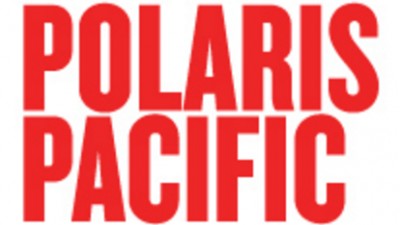Shifting Seattle: 5 Real Estate Trends That Will Drive Development in 2017

With Seattle’s explosive population growth, the Emerald City is serving as a model for other rapidly expanding cities. Seattle’s population has grown 13% in the past six years, adding 80,000 new residents. An additional 120,000 people are projected by 2035. These five trends, already exerting an appreciable influence on the landscape, will prove integral in shaping Seattle for years to come, according to Polaris Pacific partner Paul Zeger (above), who walked us through the developments, their drivers and their implications.
1. Greener Grass For Tech Talent
Overall job growth has skyrocketed, with much of this growth in the tech sector, fueling multifamily construction in South Lake Union. On the residential end, Greystar and The Justen Co were approved to build 425 apartments at 425 Fairview Ave N., while Mill Creek Residential’s Modera South Lake Union added 249 apartments to the market.
In the office space, Amazon is enlarging its corporate campus, which will total 10M SF in 2019. Vulcan Real Estate is building over 600k SF of office space (plus 151 residences) for Google by 2019.
2. Anxiety Over Affordability
The influx of people may be attributed to Seattle’s relative affordability compared to other major cities in the U.S.
“Seattle provides for a vibrant urban lifestyle, with its renowned thriving arts and entertainment scene, public transit connectivity and attractive employment opportunities for a fraction of the price,” Zeger said.
People have poured in, driving demand and stimulating the market; in 2016, Seattle’s rents rose faster than any other American city. To address these shifts and maintain Seattle as a less expensive bastion, the Mandatory Housing Affordability program pledges to create 6,000 affordable dwellings in Seattle over the next 10 years via mandatory inclusionary zoning. Mayor Ed Murray also has signed into law a tenant protection bill that bans discrimination based on source of income, protecting those paying with Section 8 vouchers.
3. TODs And Transit Expansion
Seattle is one of the five worst cities for traffic in the U.S. Zeger said "by clustering housing and resources near transit, transit-oriented developments encourage sustainable alternatives to driving" and have the potential to diminish the number of cars on the road.
In 2016, Sound Transit unveiled stations in the U District and Capitol Hill, two populous neighborhoods that continue to see robust development. Developer Gerding Edlen was approved to build a Capitol Hill Station TOD, which will include four seven-story buildings featuring 427 market-rate and affordable apartments and almost 60k SF of commercial and community space adjacent to the new station. Near the U District stop is MOD Studios, with 201 proposed residences by Evergreen Lodging.
4. Return To Condos
“Apartment construction has long outstripped condos in Seattle; nonetheless, the demand is there as the wealth of Seattle residents grows and rental rates rise,” Zeger said.
Demand is so strong that on the first day of reservations for Nexus, a 374-residence condominium tower at 1200 Howell St. developed by Burrard Group, Zeger said Seattle residents camped out overnight to secure priority pre-sale prices. During the preview weekend alone, 244 residences were reserved.
On the other side of Puget Sound, Bellevue is under the watchful eye of investors. A variety of projects are moving through the Bellevue Planning Commission, such as Mirador by Create World Group and Daniels Real Estate Co, the first phase of which will introduce 162 apartments, with the second phase including 120 condos. In its first phase, ELEV8, by Plus Investment, would add 355 condos in one tower and 435 apartments in the second. A four-star hotel and an office tower would be delivered during the second phase.
Proposals for large-scale condo towers in Seattle have also increased, particularly in Belltown and Downtown. One such project is led by Fana Group, proposing 395 condos and 178 hotel rooms in a 48-story tower downtown at 8th and Pine.
5. Foreign Investment Flow
Seattle is viewed as a global gateway city with a low-risk market and low-cost barrier to entry compared to other cities attracting foreign interest. According to Bloomberg, “about half the homes sold in Seattle’s suburbs are going to Chinese buyers.”
“Not only has investment increased, but Chinese companies are also beginning to develop product in the market,” Zeger said.
Vanke, China’s largest mainland developer, will partner with Laconia Development to build an approved 400-apartment complex in downtown Seattle at 600 Wall St. The previously mentioned Create World Group (Mirador) and Plus Investment (Elev8) are also development firms from China.
This trend already has precipitated the construction of Global Innovation Exchange in Bellevue, a technology graduate school that represents a collaboration between China's Tsinghua University and the University of Washington. CRE pros should anticipate similar synergistic projects.
To learn more about this Bisnow content sponsor, click here.

